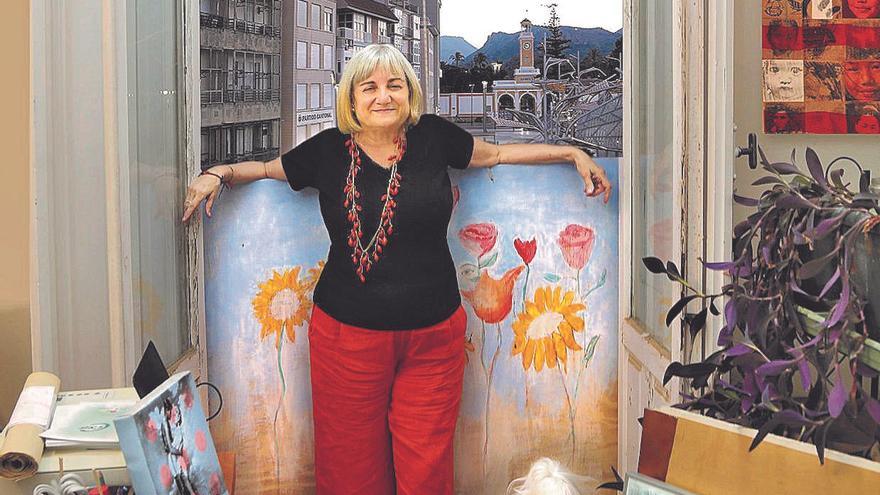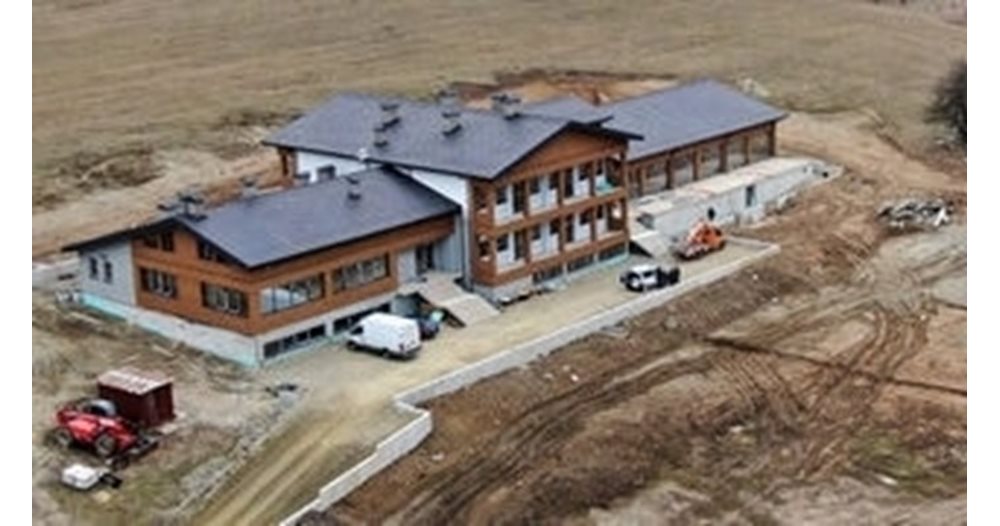The daughter of Spanish emigrants in France, she came to Spain at the age of 8. She lived in Puerto de Sagunto and paid for her Fine Arts degree while she worked, first collecting green beans in the field (bachuquetas), and then in a sports store. Since she was a child, she did not stop drawing, she did not want to study anything else, despite the fact that her mother wanted her to be a nurse, she said that she was either art or nothing.
I meet with Nicole Palacios Garrido, a veteran plastic artist whom I have followed and admired for years and who was also my son’s Bachelor of Art teacher, like so many generations. She lives in the well-known Plaza del Rey in Cartagena, in a house that is ‘corner point’, and the windows of her study face south and west. In the photo are their two dogs, Ela and Lula, who accompany us in the interview and that their owner tells me that they are adopted: one picked up from a shelter and the other, from the street, who was the last companion of that beggar ‘ cowboy’ who died of cold one winter in the city. Nicole caresses them and tells them, “No one loves me more than these two beauties,” which is a bit of an exaggeration because the artist lives with her daughter and her mother.
Her first assignment as a teacher was in Guadalajara, where she spent two years, but she could not live without the Mediterranean Sea, so the closest thing to Valencia that she found was Cartagena, on the recommendation of her best friend from the Faculty, Ángel Mateo Charris, who later became his colleague at the Bambara Gallery and the author of some magnificent texts for their catalogues. “It didn’t cost me anything to fall in love with Cartagena, and here I stayed. When the Artistic Baccalaureate was established at the Ben Arabí Institute, my satisfaction was total, and my students have always been magnificent. I have enjoyed teaching as much as creating. I just took early retirement and now I have all the time in the world for my work”, and she tells me that many people who dedicate themselves to teaching, in the end, end up not painting, but she has always combined it, as a necessity, cultivating a long history of exhibitions throughout Spain and in foreign fairs, such as Ghent.
He tells me some anecdotes, like the months he was in a wheelchair for an operation and that coincided with the three months that the elevator was broken: He locked himself in the studio, he couldn’t go down at all, it was his second confinement, so he didn’t stopped working. And he tells me about his latest show, at the Gigarpe Gallery, entitled War and Peace, a tribute and a denunciation of the wars and of the Ukraine. And above all we talk about cinema, which he is passionate about and which is always so present in his works: «Since my time at the Faculty I have taken advantage of the world of cinema to interpret reality. My works always speak of my world, of what happens, of what happens to people and mine, and the cinema helps me tell it».
He tells me about his references that they have changed over time, but that they are very diverse, from Modigliani to Picasso, Chirico, the German or Spanish expressionists or Bacheleg’s transfers, and we end up talking about the current world: «I am very concerned about the viability of our civilization, the cracks and wounds in our civilization, the unsustainable inequality, the injustice and the urgency of climate change, the violence, the wars, the hopelessness of people and, above all, of young people, the terrible effects of the pandemic, not only in the economy or in health, but also in the unhappiness of the people…”, and she tells me about Cartagena: “Despite everything that can be improved, everything that remains to be done, if I am honest, this The city is much better than the one I found in the 90s. The culture has improved in terms of music, but we have to advance in the plastic arts: we are running out of galleries, we need exhibition halls and it has practically disappeared private collecting and patronage».
–


